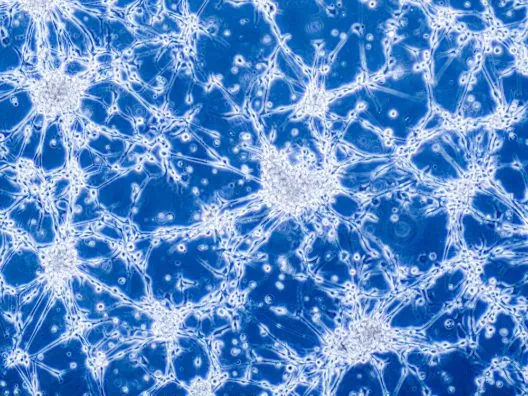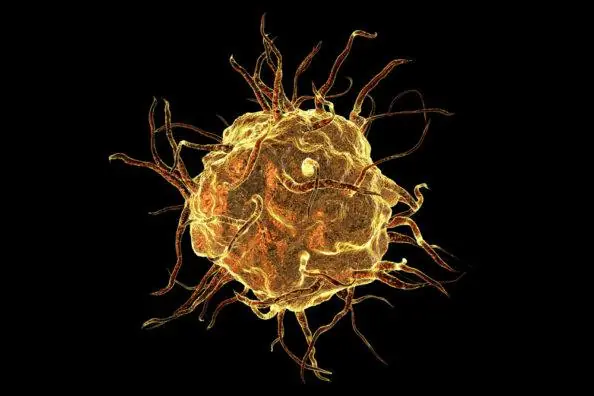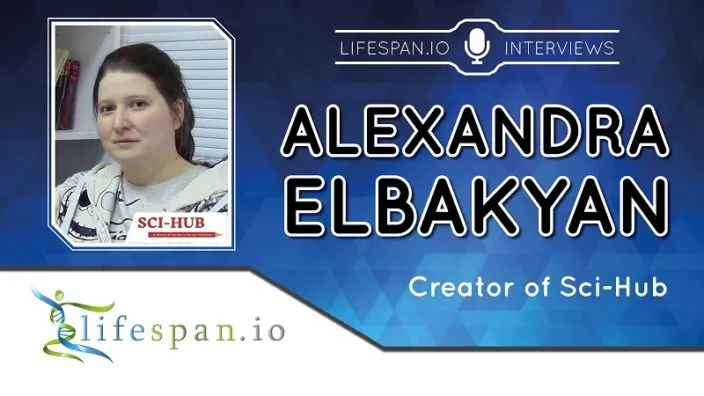Coming from a fusion of the words ‘protein’ (a molecule that a cell uses as a machine or scaffolding) and ‘stasis’ (meaning to keep the same), the term ‘proteostasis’ can essentially be simplified into “Each function reliant on proteins is running as it should. There are enough proteins to serve a function, and the concentrations of proteins are being maintained at healthy levels.”
Proteostasis is the process that cells perform in order to have all their proteins functioning properly; this, in turn, allows cells to work properly. Since cells are the building blocks of our bodies, when they work properly, we are healthy.
When proteostasis is not maintained, cells become dysfunctional and can die; this failure can lead to aging, cancer, neurodegenerative diseases, inflammation, developmental defects, and other problems. The loss of proteostasis is thought to be a primary reason we age, and we discuss how this happens in more detail here.
Why do cells need proteins?
Proteins are perhaps the most important molecules in cells. DNA’s main purpose is to act as a ‘protein library’, storing and passing on information about how to build proteins.
If a cell does something, you can be fairly certain that a protein is behind it at some level. In a neuron, for instance, proteins are important for the creation, movement, release, and recognition of neurotransmitters, the chemicals that allow brain cells to talk to each other. Proteins are also used to help cells determine which direction is up or down, left or right, or front and back.
For instance, to discern its front from its back, a cell uses 3 proteins, BCD, HB-M, and NOS. The side to become the ‘front’ becomes high in BCD and HB-M, while production of NOS is blocked in that region. Meanwhile, the side to become the back becomes high in NOS, with BCD and HB-M inhibited in that region. When the cell divides, this balance shifts ever so slightly, depending on the direction that the two ‘daughter cells’ are facing.
Through detecting how the proteins are distributed, the cell knows where it is in the body and so produces the right structures in the right places. It is because of this system that our noses only form on the front of our heads, for instance; a breakdown in this system could lead to a nose forming on the back of your head or not forming on your face.
Proteins are also vital for allowing the sheer amount of chemical reactions necessary in a cell to be carried out. It may not feel like it, but 37 degrees C (body temperature) is extremely cold for chemistry; hardly anything can happen at this temperature. To get around this, our bodies turn protein strings into tiny machines called ‘enzymes’ that physically ram molecules together, forcing chemical reactions to happen at temperatures at which they never would naturally.
Not only does this allow our cells to cause the reactions necessary for their own survival and life in general, it also allows our cells to control these reactions. Through disabling a protein’s creation, for instance, a cell can turn off a reaction and use that disabled reaction as a signal to activate (or deactivate) something else in the cell.
Through increasing the amount of an enzyme being produced, a cell can speed up a reaction, and through decreasing the amount of enzyme being produced, it can slow it down. This perfect control is one method that our bodies use to maintain ‘homeostasis’; in other words, it helps us to keep our bodies within the narrow conditions necessary for life. For example, homeostasis is how we stop ourselves from overheating or freezing, from becoming too acidic or too alkaline, and from having too high blood pressure or too low. In summary, homeostasis is the most important process in the body for its own survival.
So where does it all go wrong?
Unfortunately, proteostasis can be lost during many disease states, including, but not limited to, aging[1]. Various toxins can, for instance, inhibit the proteins in a person’s cells[2]. This inhibition can cause a loss of proteostasis.
Incurable infectious agents (which cause disease) known as prions can also form spontaneously out of any newly forming protein in any healthy individual at any time, acting just like zombies – converting any healthy version of the protein that they were meant to be into another prion upon touch, causing death through loss of proteostasis.
During the aging process, proteostasis is lost for other reasons; for instance, while a protein is being assembled, it can sometimes fold incorrectly, forming a useless glob of junk, which can accumulate unless the cell gets rid of it through autophagy, breaks it down with a general ‘recycling bin’ (the proteasome), or refolds it into its proper shape through the use of ‘chaperone proteins’ in what is known as “chaperone mediated folding”.
Exposure to heat (otherwise known as “heat shock”) can also cause a protein to misfold. When the human body detects this heat, it responds by using the SIRT1 family of proteins to ‘turn on’ ‘heat shock proteins’, such as hsp70. These proteins are chaperone proteins; they can refold the proteins to their previous shape and prevent them from clumping together into harmful masses called ‘aggregates’.
Additionally, cross-linking between proteins can occur[3], which causes these proteins to stick together, increasing their stiffness and causing them to lose some of their function.
Why does this matter?
Numerous age-related diseases have their roots in the loss of proteostasis, including macular degeneration[4] (a form of blindness), the increased risk of heart attack and stroke that comes with age, Alzheimer’s disease[5], and Parkinson’s disease[6]. Finding ways to restore proteostasis could potentially allow us to prevent or reverse many of these age-related diseases.
How can we restore proteostasis?
There are a number of promising routes towards the restoration of proteostasis; we will discuss a few below.
The first approach, AmyloSENS, was originally funded by the SENS Research Foundation at UT Houston at the Sudhir Paul lab and has now moved to the hands of biotechnology company Covalent Biosciences. This company is currently working on immunotherapeutic candidates that target amyloid proteins for treating central nervous system and systemic amyloidosis.
The GlycoSENS program, which is related to amyloids, is being developed by the SENS Research Foundation and researchers at Yale. This program is focused on tackling the protein crosslinks that accumulate in tissue as we age. This cross-linking creates a weblike structure of fused proteins outside of cells, leading to loss of tissue mobility, elasticity, and repair ability.
The aim of GlycoSENS is to take enzymes from bacteria that decompose bodies in graveyards and use these enzymes as a therapy. Enzymes for the breakdown of proteins have to be very specific, and since we do not see the misfolded proteins responsible for the loss of proteostasis flooding the soil of graveyards, these misfolded proteins must be biodegradable.
This means that at least some of the bacteria present in graveyards must have enzymes capable of breaking down the misfolded proteins, and if we can identify these enzymes, we can provide our cells with them so they can break down the problem proteins themselves.
The second possible approach is the use of the recently invented ‘adPROM’ system, which was affectionately named the ‘Protein Missile System’ [7] by its inventors. This system essentially hijacks the body’s own ‘protein destruction’ system, allowing it to recognize and target a specific protein of choice within the cell. The system achieves this by creating a molecule which binds the protein targeted for destruction to a ‘CRL’ protein, which then binds a ‘ubiquitin ligase’ protein also within the ‘CRL’ system.
This ubiquitin ligase (which can be loosely translated into “an enzyme that adds the protein ‘ubiquitin’ to its target”) effectively marks the targeted protein for destruction by adding a string of ubiquitin molecules to it. If the body’s protein-recycling system (the proteasome) detects these molecules, the proteins attached to these molecules are broken down into individual amino acids. While this approach is promising, it is still in its early days.
The technology involved is not even a year old at this point; no attempts that we know of are being made to use the Protein Missile System to reverse loss of proteostasis at this time. However, this is not to say that the Protein Missile System will not be used in this manner in the future, and we are keeping an eye on developments.
Finally, the removal of misfolded proteins may be possible using the General Amyloid Interaction Motif (GAIM) approach[8-13].
GAIM is able to target multiple common amyloids, including Aβ, tau, α-synuclein, and prions, by recognizing a common amyloid protein conformation shared by them all. Therefore, it could be used to prevent the formation of misfolded proteins involved in the development of a number of neurodegenerative diseases and help to restore proteostasis. GAIM also shows promise in targeting key stages of amyloid assembly, preventing their formation in the first place and blocking the cell-to-cell spread of misfolded proteins.
The GAIM approach currently relies on a protein found on the outer coat of a bacteriophage, which is a virus that only infects bacteria. This protein can prevent misfolded proteins from clumping together into harmful plaques and has been shown to increase the amount of tyrosine hydroxylase in cells. This is a vital precursor to dopamine, and a deficiency can cause Parkinson’s disease.
While GAIM is early in development, it has enjoyed some positive results thus far, and the first and second generation candidates are in Phase 1 and preclinical testing at this time. We will be watching developments closely.
Conclusion
Given the sheer number of misfolded proteins and crosslinks to break down, any approach to this issue must be methodical, focusing on the most frequent cross-links and misfolded proteins and continuing on to less common problems.
With monoclonal antibodies for glucosepane finally being produced at Yale, we appear to be taking our first steps down this long path, thanks to the efforts of the SENS Research Foundation.
If advances continue in this area, we may see a significant decrease in average blood pressure as well as a reduction in many of the classical diseases of old age, such as Alzheimer’s disease and Parkinson’s disease. Beyond the direct benefits of restoring proteostasis, the reduction in blood pressure should decrease the rate of loss of non-renewing quiescent cells as well as reduce the load on the remaining stem cell pool in aged individuals. Therefore, restoring proteostasis should indirectly have a beneficial impact towards the treatment of two other hallmarks.
Literature
[1] López-Otín, C., Blasco, M., Partridge, L., Serrano, M., & Kroemer, G. (2013). The Hallmarks of Aging. Cell, 153(6), 1194-1217. https://dx.doi.org/10.1016/j.cell.2013.05.039
[2] enzyme inhibitors. (2017). Chemguide.co.uk. Retrieved 8 August 2017, from https://www.chemguide.co.uk/organicprops/aminoacids/enzymes3.html
[3] Sell, D., Biemel, K., Reihl, O., Lederer, M., Strauch, C., & Monnier, V. (2005). Glucosepane Is a Major Protein Cross-link of the Senescent Human Extracellular Matrix. Journal Of Biological Chemistry, 280(13), 12310-12315. https://dx.doi.org/10.1074/jbc.m500733200
[4] Athanasiou, D., Aguilà, M., Bevilacqua, D., Novoselov, S., Parfitt, D., & Cheetham, M. (2013). The cell stress machinery and retinal degeneration. FEBS Letters, 587(13), 2008-2017. https://dx.doi.org/10.1016/j.febslet.2013.05.020
[5] Murphy, M., & LeVine, H. (2010). Alzheimer’s Disease and the Amyloid-β Peptide. Journal Of Alzheimer’s Disease, 19(1), 311-323. https://dx.doi.org/10.3233/jad-2010-1221
[6] Wakabayashi, K., Tanji, K., Mori, F., & Takahashi, H. (2007). The Lewy body in Parkinson’s disease: Molecules implicated in the formation and degradation of α-synuclein aggregates. Neuropathology, 27(5), 494-506. https://dx.doi.org/10.1111/j.1440-1789.2007.00803.x
[7] Fulcher, L., Macartney, T., Bozatzi, P., Hornberger, A., Rojas-Fernandez, A., & Sapkota, G. (2016). An affinity-directed protein missile system for targeted proteolysis. Open Biology, 6(10), 160255. https://dx.doi.org/10.1098/rsob.160255
[8] Tsubery, H., Krishnan, R., Proschitsky, M., Asp, E., Lulu, M., Gilead, S., … & Cullen, V. (2014). IMMUNOGLOBULIN-GENERAL AMYLOID INTERACTION MOTIF (IG-GAIM) MOLECULES TARGET BETA AMYLOID AND NEUROFIBRILLARY TANGLES IN VITRO AND IN VIVO. Alzheimer’s & Dementia: The Journal of the Alzheimer’s Association, 10(4), P494.
[9] Levenson, J. M., Asp, E., Carroll, J., Cullen, V., Dodiya, H., Proschitsky, M., … & Tsubery, H. (2014). Reduction of β-amyloid and phospho-tau in transgenic mice by a novel fusion protein bivalent for a general amyloid interaction motif (gaim). Alzheimer’s & Dementia: The Journal of the Alzheimer’s Association, 10(4), P866.
[10] Levenson, J. M., Asp, E., Carroll, J., Cullen, V., Dodiya, H., Proschitsky, M., … & Tsubery, H. (2014). Reduction of β-amyloid and phospho-tau in transgenic mice by a novel fusion protein bivalent for a general amyloid interaction motif (gaim). Alzheimer’s & Dementia: The Journal of the Alzheimer’s Association, 10(4), P866.
[11] Masliah, E., Rockenstein, E., Fisher, R., Levenson, J., & Gannon, K. (2013). A general amyloid interaction motif (GAIM) approach to targeting multiple types of misfolded protein deposits in models of neurodegenerative disease. Alzheimer’s & Dementia: The Journal of the Alzheimer’s Association, 9(4), P809.
[12] Levenson, J., Asp, E., Becker, M., Krishnan, R., Masliah, E., Mufson, E., … & Tsubery, H. (2013). Novel fusion protein bivalent for a general amyloid interaction motif reduces beta-amyloid aggregates in transgenic mice. Alzheimer’s & Dementia: The Journal of the Alzheimer’s Association, 9(4), P810.
[13] Krishnan, R. (2013). A novel protein motif that targets misfolded protein assemblies. Prion, 7, 97.


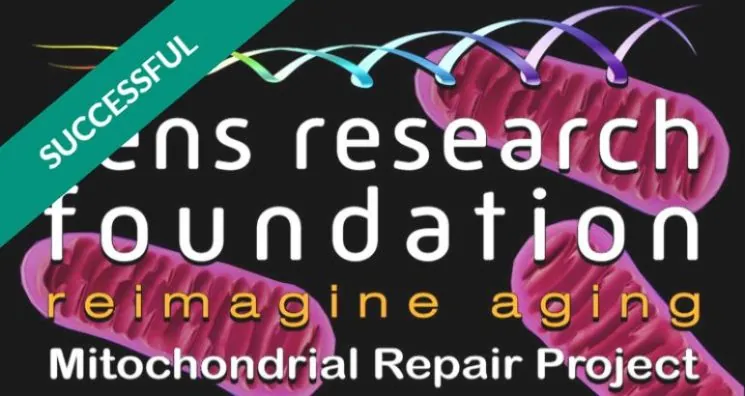


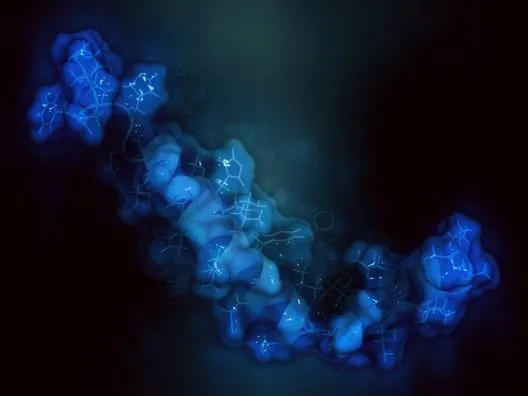
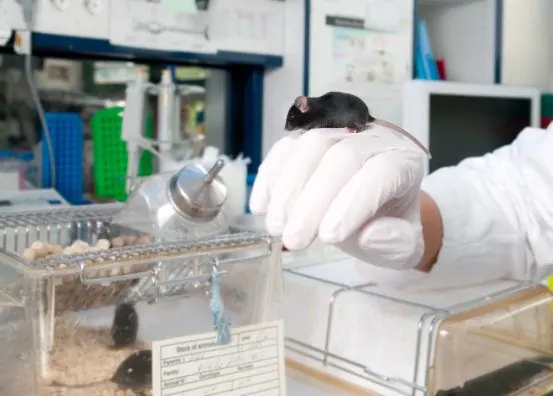
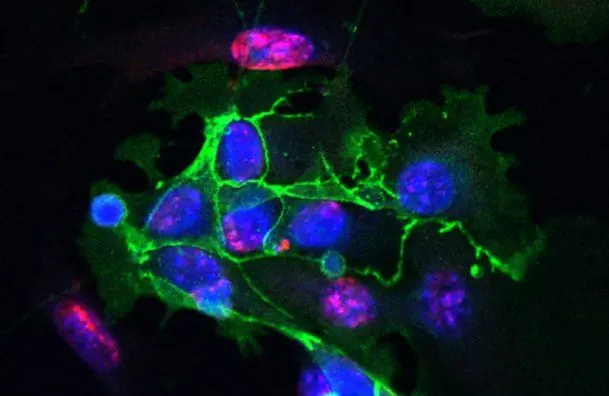
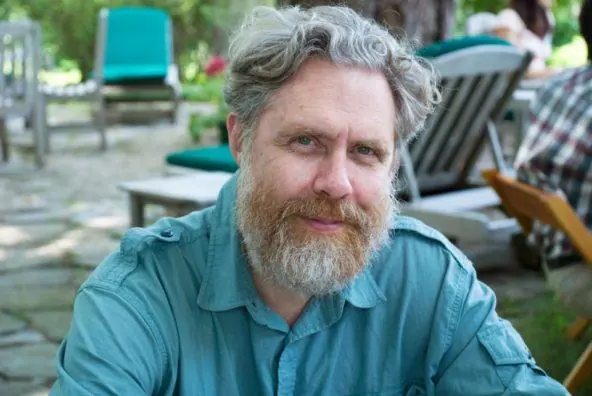
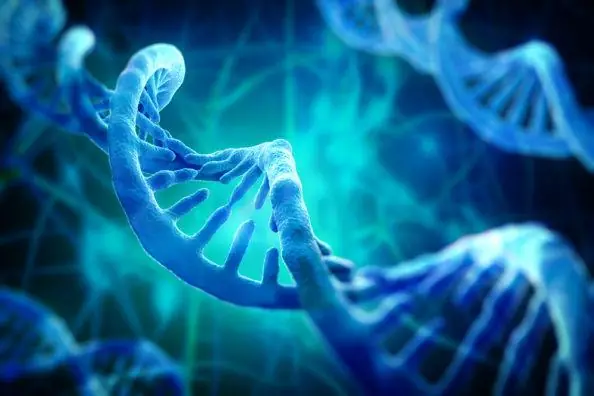

 For any activity, be it education, fundraising, or lobbying for a new law, a reliable body of evidence should be at hand in order for an advocate to be able to explain and justify suggested changes and initiatives.
For any activity, be it education, fundraising, or lobbying for a new law, a reliable body of evidence should be at hand in order for an advocate to be able to explain and justify suggested changes and initiatives. The usual places to promote rejuvenation research and corresponding policies are scientific conferences, public events, and meetings of working groups discussing necessary changes in a law. While the last type of events are most often free (thanks to the principles of democracy), this cannot be said of conferences.
The usual places to promote rejuvenation research and corresponding policies are scientific conferences, public events, and meetings of working groups discussing necessary changes in a law. While the last type of events are most often free (thanks to the principles of democracy), this cannot be said of conferences.